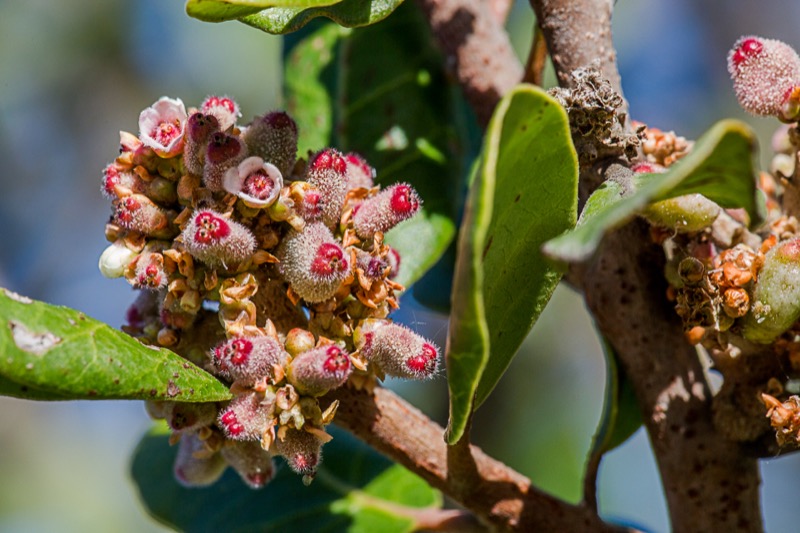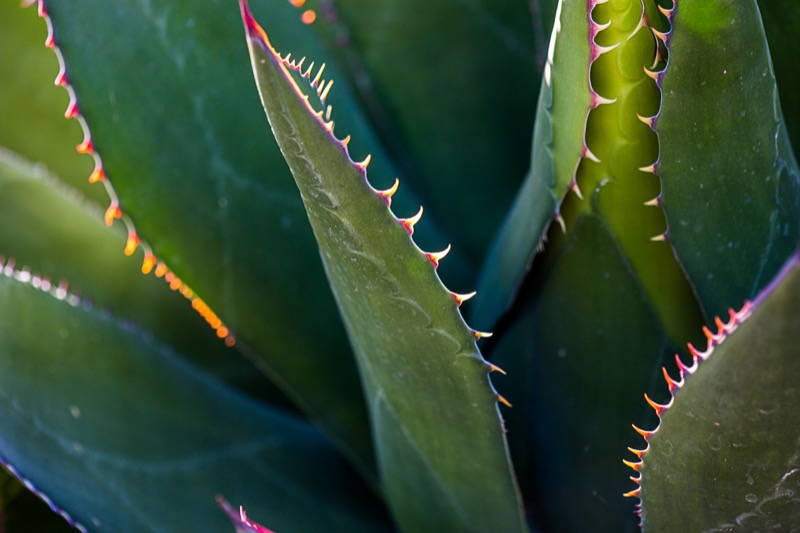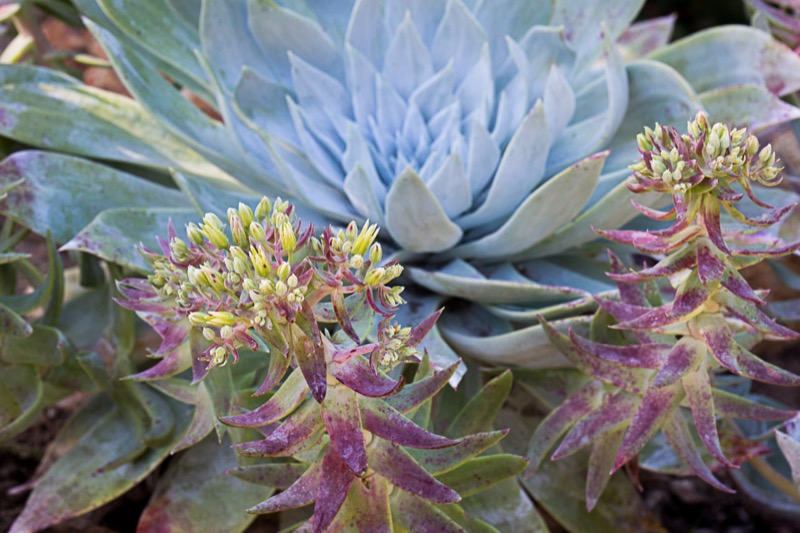
Photo by: Deborah Small
For all living things adaption is crucial to ensure survival under a given set of conditions. In order to survive, an organism must gather enough food or energy for growth, protect itself from harm, and reproduce. To obtain or store enough water for growth, in a dry climate like San Diego, plants have developed various adaptations. Some have long or complex root systems that tap into groundwater stored deep below. Others store water in leaf tissue for use during drought conditions. Various leaf adaptations, such as leaf coloration, shape, and rigidity aid in limiting transpiration during the day. These same adaptations help in collecting and directing water to the plant. In San Diego’s Mediterranean climate, characterized by a short rainy season followed by a long dry period, the native plant communities of the Coastal Sage Scrub and the Southern Maritime Chaparral have adapted in many ways to ensure survival during these annual dry periods. Additionally, each plant found at Cabrillo National Monument has adapted in one or more ways to ensure its survival throughout the year.
Even during the wet season, San Diego’s yearly rainfall remains significantly low in comparison to other areas throughout North America. On average, this area receives less than ten inches of rain per year and has a dry period typically between April and October. With water being a vital resource to life, how then do these native plants survive? Most of the native plants found at the park are referred to as drought-deciduous. These plants drop their leaves during the dry season and enter a dormant state until the next rainfall. For example, Encelia californica, the California Sunflower, rapidly blooms during the wet season, revealing its beautiful yellow flowers. These flowers provide the seeds for future generations. During the dry season, Encelia californica drops its leaves and to the untrained eye looks as if it has died. However, it will continue this water-dependent pattern for many years to come. Next time you are at the park, take a look around to see which plants may be in a dormant or blooming states.

Photo by: Deborah Small
Another way to face drought is to store water or limit transpiration during dry periods. Most succulents or cactus have thickened and fleshy sections that are used to retain water, like the Coast Prickly Pear, Lady’s Fingers, or Shaw’s Agave. These plants are typically easy to identify. Yet, take a deeper look at Rhus integrifolia (Lemonade Berry) or Dudleya pulverulenta (Chalk Dudleya). Both plants have adapted to keep the water they have within their leaves. Lemonade Berry leaves are stiff and waxy, which limit transpiration from the plant to the atmosphere. Whereas, Chalk Dudleya with its wide fleshy green leaves, secretes a white “chalky” substance that it used to reflect sunlight. Just as you would put sunscreen on before facing the sun for a long duration, the Chalk Dudleya has adapted in a similar way.

Photo by: Deborah Small
Each of our native plants found at Cabrillo National Monument and throughout San Diego have an adaptation story to tell. As you explore the park, try to discover more of these stories. How does the plant survive predation? How is it able to reproduce? How does the plant face the sun? Always remember the first step for any scientist is to observe. So get out there and start observing!
